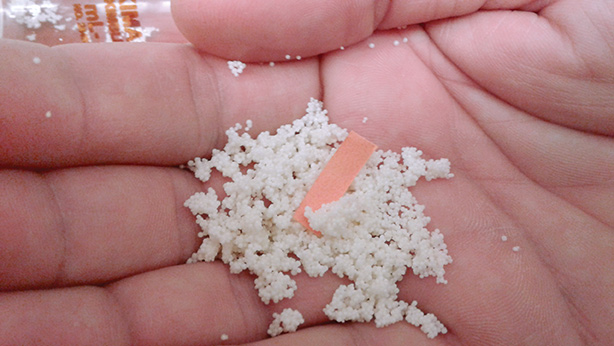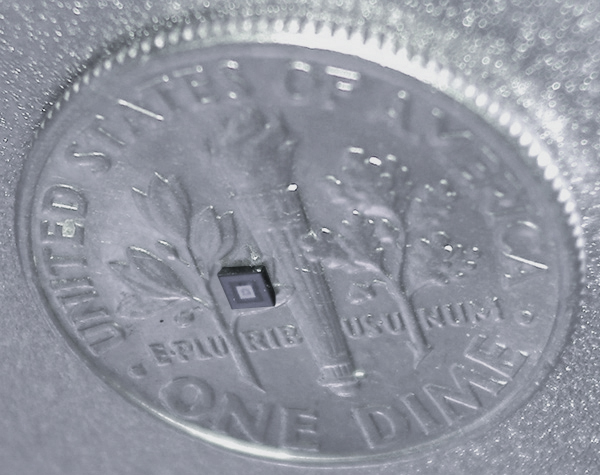Exploring the Subsurface with Nanotech

Above: Multicore microsponges encapsulate and delay release of 12M HCl cargo.
Below: Autonomous electronic nanosensor.

Reaching across the globe to unite diverse teams of researchers in finding solutions to problems at the intersection of two distinct scientific disciplines might seem like an impossible undertaking, but not for the Bureau of Economic Geology.
“What if we could insert ‘smart dust’ down a borehole that would tell us more about the chemical and physical makeup of the subsurface?”

That was the big question posed 10 years ago by Bureau director Scott W. Tinker that launched the Advanced Energy Consortium (AEC), a complex merger of nanotechnology and oil and gas exploration that has produced some fascinating research. The AEC brings together scientists, graduate students, and postdocs from around the world, all focused on answering Tinker’s “big question.” These researchers are developing practical applications to real-world problems (“use cases”) that supporting partners believe nanotechnology can better address.
The use cases involve using nanoparticles to map fracture systems, track waterfloods, and increase hydrofracturing effectiveness. The AEC has also developed time-released nanoscale payload-delivery particles to transport important cargo to specific parts of the subsurface reservoir. AEC researchers also developed a tiny electronic nanosensor that can report downhole conditions such as temperature and pressure. In 2017, researchers conducted numerous field tests of these nanotechnologies to better simulate the harsh and complex conditions encountered in the subsurface.
Sponsoring partners of the AEC have invested over $50 million in these productive research efforts over the years. Sponsors in 2017 include ExxonMobil, Shell, Total, Repsol, BHP Billiton, and the U.S. Department of Energy through Sandia National Laboratories.
For more information about how you, your company, or your institution can become involved in this innovative research, please contact Jay Kipper.